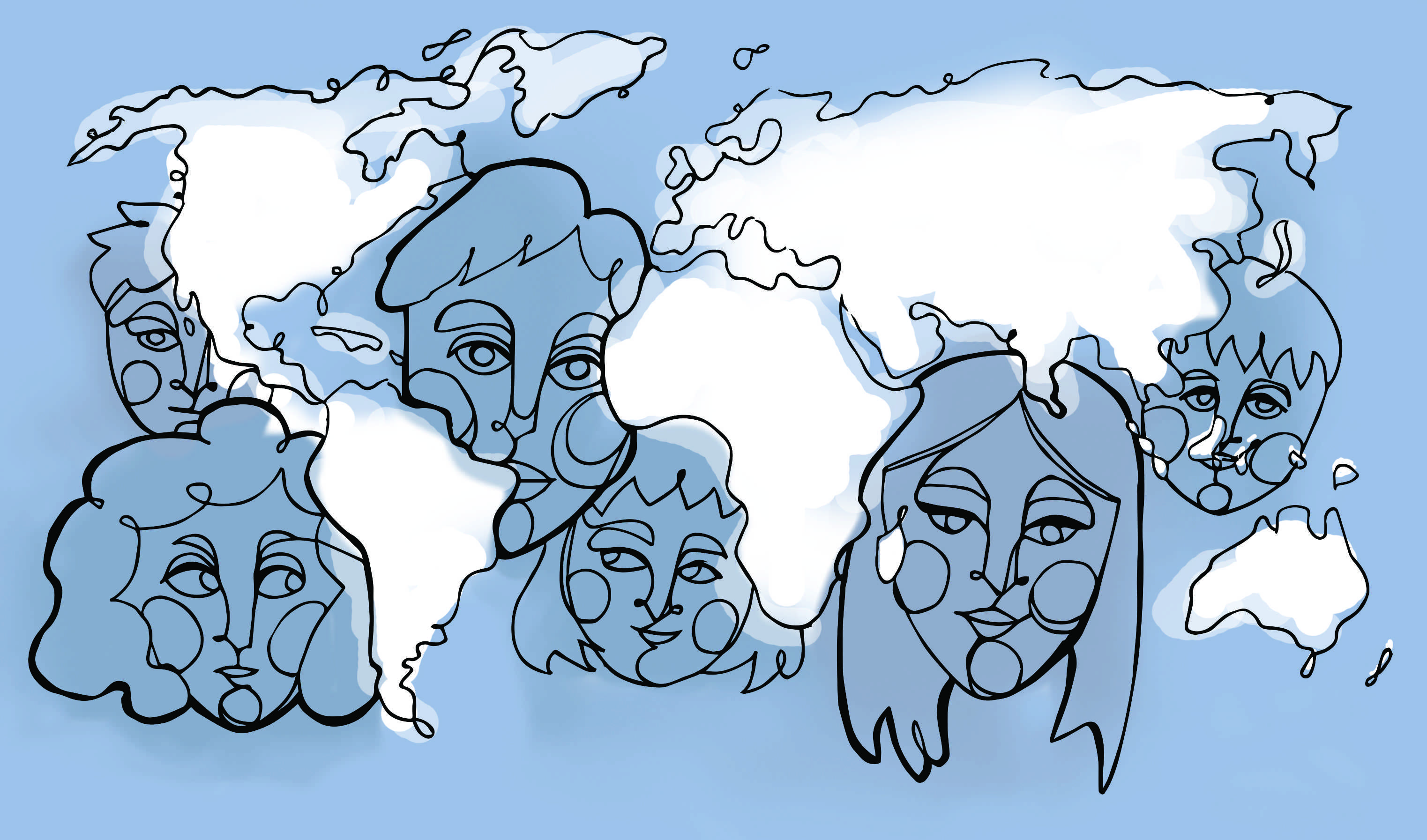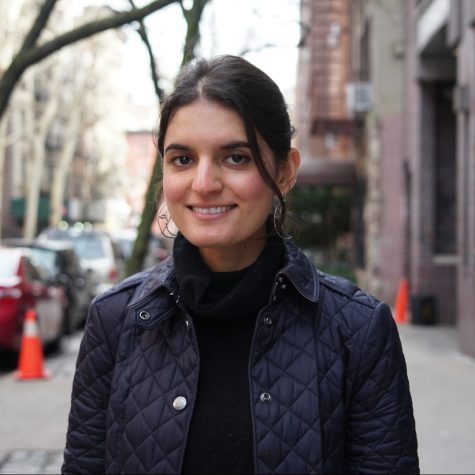Back in high school, I had a substitute teacher that showed up relatively often to fill in for any history, science or math teacher. Or anyone, really, that was absent for a day or two. His presence was a recurring theme, particularly because whenever there was any sort of momentary lull in the classwork, he liked to fill the gap with stories of the years he had worked at our high school as a full-time teacher decades ago — back when there was a geography class at the school, and he taught it. He’d talk about it like he was describing the days of yore, and send his storytime somewhat grimly with something akin to “that’s back when kids actually had to learn geography.”
Most of us did not grow up in a generation or environment where geography classes were the norm. By the time we got to middle school, they had mostly lost their place in history and social studies curricula. Now, there are more STEM options than ever before. Which is great! STEM is important and we all know that. I say that as a devout liberal arts major who fully understands, values and enjoys her STEM education. I grew up in Silicon Valley, after all.
But is it not disheartening that in the U.S., almost 75 percent of eighth-graders tested below the level of “solid competency” in geography performance? It is not just about being able to pinpoint a country on a map or memorize information for the sake of an exam. In this new age of global connectivity, knowing where we are with respect to the rest of the world prepares us for an increasingly global society. And it provides a much-needed understanding of the impact of geography on foreign relations, the interconnectivity of the global economy, the evolution of the political world order and the history of unrest around the world.
In 2016, a study from the Council on Foreign Relations and the National Geographic Society “revealed significant gaps between what young people understand about today’s world and what they need to know to successfully navigate and compete in it.” We think geography is obsolete — we have Google Maps, right? But when one considers that a majority of American students tested in the study were not even aware of where U.S. troops are stationed around the world, the translation between what we think of as literal geography and crucial geopolitical issues is much clearer. If the average score for college-educated 18-to-26-year-olds was a failing grade, it is a clear indication of the necessity of the system’s alteration from the ground up.

It is pivotal to consider the significant ramifications of being geographically unaware: a lack of understanding regarding geography in the world can lead to what many of us would acknowledge as the greatest political calamities of our modern era. The rise of populism in the last few years has manifested in the U.S. political sphere and is startlingly blatant in the culmination of votes towards political movements like Brexit, in which a lack of palpable understanding regarding immigration and political awareness manifested in one of the influential political schisms in recent memory.
The 2016 study demonstrated an extreme amount of troubling information. Vice President of education at the National Geographic Society Kathleen Schwille noted that most participants could not “tell the difference between specific countries,” notably Iraq and Iran — two countries with which the United States has had extreme political engagements in the last two decades. One of which we invaded in 2003 — the Iraq war officially ended in 2001, but its significant consequences are still with all of us today — and the other, Iran, is a former U.S. ally with which we have been engaged in a 40-year cold war.
And when we do see geography education, it is often relatively Euro-centric. I can say with certainty that the only time I ever did work with a map in high school was during my first week of AP Modern European History when we were tested by putting the names of Western European countries on a blank map of the continent.
As I observe young politicians campaigning on their intention of improving our education system, which currently stands at about 27th place in terms of world rankings, there seems to be a sense of ignorance and willful rejection of the importance of a more robust experience for students studying social sciences. Does having a more educated, informed and well-rounded populace rely solely on a national focus on the mathematics and science courses? Geography education might not be a sexy topic to push, per se, but it is strange to imagine that somewhere along the way, global awareness and spatial analysis became arbitrary and seemingly undesirable skills. Global understanding and geographic awareness should be a basic necessity of our educational system, not an amorphous, optional concept.
According to the National Geographic Education Foundation, geography is the only subject in a list of nine areas of “core academic subjects in federal education legislation” that received no funding between the years 2002 and 2012 — that is in comparison to nearly $13 billion spent on English Language Arts and Math & Science. But there seems to be a distinct disparity in our funding and our job market necessities — in fact, the Department of Labor has reported that the number of employment specialists in geography is projected to grow 29 percent between 2012 and 2022, compared to the average of 11 percent growth for other occupations. Geography plays a critical and practical role in the fields of “national security, law enforcement, health care, environmental protection, and natural resources conservation.”
We associate geography with tediousness, but it can serve as the impetus for earlier engagement in international relations and politics. It can be taught in tandem with current-events curricula in classrooms in the U.S. We can see potential for this expansion in the rise of courses like AP Human Geography being offered in more schools. The course, while focusing in some part on actual geography, also aims to introduce students to utilizing spatial concepts and landscape analysis in order to understand patterns of “human social organization and its environmental consequences.”
Taking a course like AP Human Geography is a good start, but it cannot undo a systemic failing — one year of broad conceptual study cannot make up for a lack of tangible educational foundation in geo-literacy or awareness of how to label a country on a map anywhere outside of North America. We need the teachers who lead geography courses to be properly trained in geographic study rather than simply expecting social studies teachers to include some geographic grounding in their courses. As the Canadian Council for Geographic Education argues, we cannot “assume that any teacher can pick up enough geography to teach the subject.” For any geography course to stand alone, trained instructors will be essential.
The way we have faltered with geography is similar to how we are beginning to treat history courses: as auxiliary, uneventful and monotonous. We do not realize how crucial our understanding of our past is to our understanding of our present and our future, and we have most certainly forgotten how integral our understanding of our surroundings is to our understanding of what is happening in the world.
Our turn away from these topics in our educational system is a turn away from empathy and communication. The deprioritization implies an apathy toward what happens to others and a central focus on what happens to us. By neglecting geography education, we are, in some ways, suggesting that what happens on the borders and on the continents outside of our own are somehow unimportant to us.
But now more than ever, with an administration in the White House that is hell-bent on the distortion of truth and fact — particularly in regard to issues of immigration, border security and relationships with foreign governments — our independent understanding of our world is of the utmost importance. I urge any politicians considering endeavoring upon campaigns to consider the creation of legislation in regard to better implementation of geography curricula in the United States.
If our election in 2016 proved anything, it was that we as a nation are in desperate need of a more informed populace — and that what causes the empathy gap sponsored by the Trump administration and his legion of followers is not pure malintent, but rather a striking lack of global, national and political literacy. It’s the right time to acknowledge what we miss in education reform when we forget about the importance of creating informed citizens out of our students and focus solely on creating better test-takers.
It’s time for a change, and while it may seem like a small start, the impact will yield a more politically engaged America. And it can all start with a map in the classroom.
Opinions expressed on the editorial pages are not necessarily those of WSN, and our publication of opinions is not an endorsement of them.
A version of this article appeared in the Monday, Feb. 4 print edition. Email Hanna Khosravi at [email protected].
























































































































































